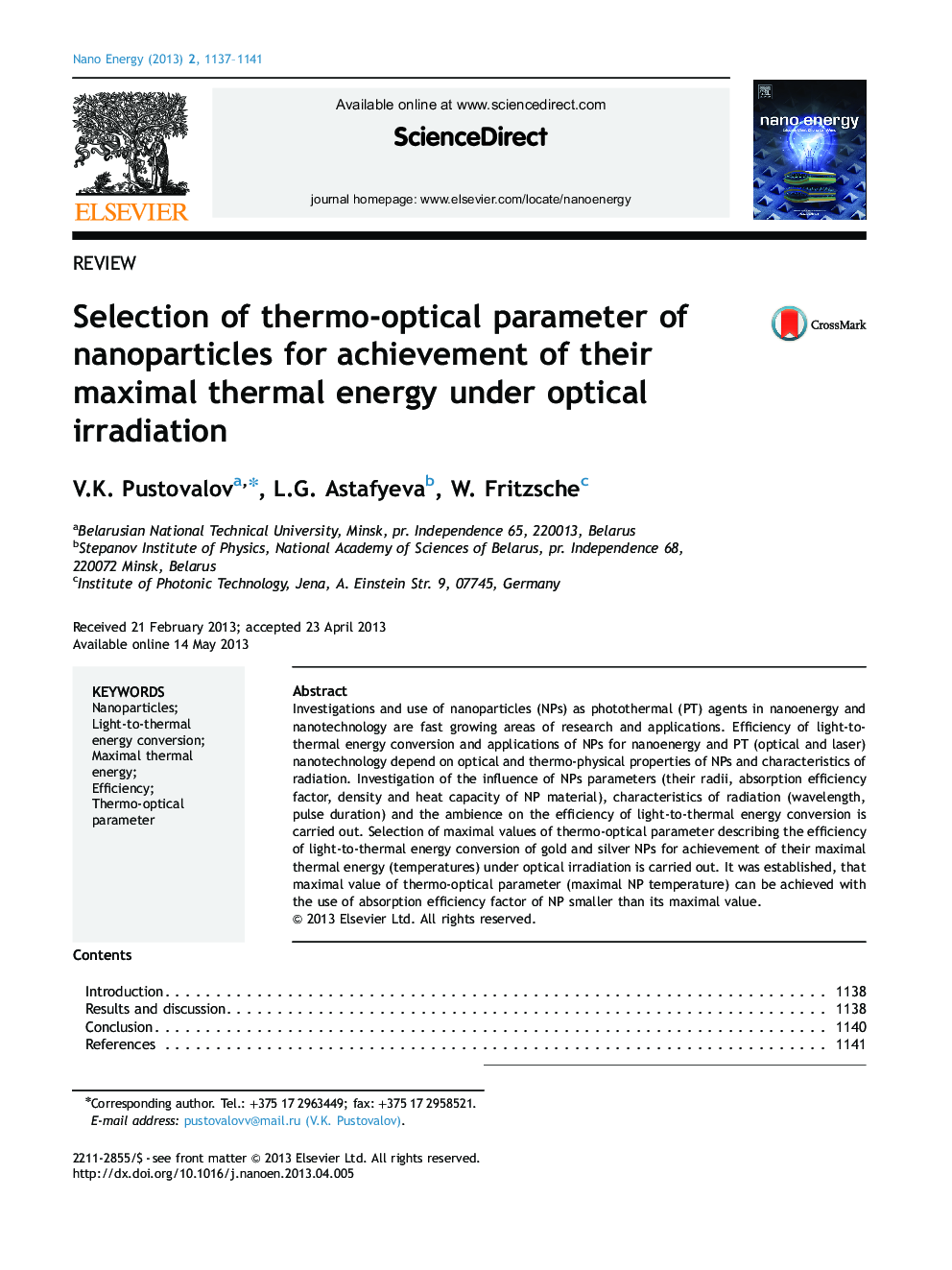| Article ID | Journal | Published Year | Pages | File Type |
|---|---|---|---|---|
| 1558076 | Nano Energy | 2013 | 5 Pages |
► The efficiency of light-to-heat conversion in nanoparticles (NPs) is investigated.► Selection of thermo-optical parameter of the conversion efficiency is carried out.► Maximal conversion achieves with use of NP absorption smaller than its maximal value.
Investigations and use of nanoparticles (NPs) as photothermal (PT) agents in nanoenergy and nanotechnology are fast growing areas of research and applications. Efficiency of light-to-thermal energy conversion and applications of NPs for nanoenergy and PT (optical and laser) nanotechnology depend on optical and thermo-physical properties of NPs and characteristics of radiation. Investigation of the influence of NPs parameters (their radii, absorption efficiency factor, density and heat capacity of NP material), characteristics of radiation (wavelength, pulse duration) and the ambience on the efficiency of light-to-thermal energy conversion is carried out. Selection of maximal values of thermo-optical parameter describing the efficiency of light-to-thermal energy conversion of gold and silver NPs for achievement of their maximal thermal energy (temperatures) under optical irradiation is carried out. It was established, that maximal value of thermo-optical parameter (maximal NP temperature) can be achieved with the use of absorption efficiency factor of NP smaller than its maximal value.
Graphical abstractDependences of thermo-optical parameter ΔT0/E0 (black lines 1–3 refer to the left axis) and absorption efficiency factor Kabs of NP (red lines 4 refer to the right axis) for gold NPs and for pulse duration tP=1×10−8 (1), 1×10−10 (2), 1×10–12 (3) s on radius r0 for λ=532 nm. Vertical lines denote the locations of maximal values of ΔT0/E0 and Kabsmaxon axis r0. Figure optionsDownload full-size imageDownload as PowerPoint slide
